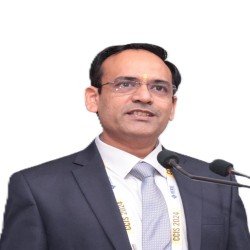Re-Architecting Electronics for EVs, Energy Storage
Disrupting performance and cost barriers
MOSart Semi is a new-generation IC design and product engineering company, built by leaders with five decades of experience at global semiconductor companies like TRAM Semiconductors, Micron, Texas Instruments and ams OSRAM.
To reimagine battery management and power conversion through precise, intelligent semiconductor innovation—accelerating the adoption of green technologies and enabling a more sustainable future for humanity.
To build India’s most inspiring semiconductor innovation platform—where top engineering talent creates world-class products that power global energy and mobility systems, redefining what’s possible for the world.
Why MOSart Semi?
- Built by industry experts, whose ICs are designed into Tesla and BMW cars.
- Full-stack BMS expertise from silicon design to system integration
- Mass production experience with AEC-Q100 qualified automotive chips
- Indian support, faster iteration and lower total cost of ownership
Schedule a Demo
Our Leaders

Rajesh Gupta
CEO, MOSArt Semi

Dr. Krishna Kanth Avalur
CTO, MOSArt Semi

Madhusudan Sampath
VP, Digital HW Architecture

Rajesh Gupta
CEO, MOSArt Labs
27 years of industry experience
Summary
- 27 years in the Industry, Last 13 as country head of two GCCs
- 25+ Patents, Innovation council chairman
Academics
- B. Tech. IIT, Madras (EEE), AIR 127, Ramasarma Kolluri Medallion
- MS in ECSE, Rensselaer, NY USA, Henry J. Nolte Award
Past Industry Experience
- Eng, Rockwell Science Center, CA, USA 1998–2001
- Eng → Mgr, T-RAM Inc, CA, USA 2001–2010
- Eng Mgr, Micron, CA, USA 2010–2012 (Micron acquired TRAM)
- Country Head, Micron, BLR, India 2012–2019
- Country Head, ams-OSRAM, HYD, India 2019–2025
Customers @past companies
- Tesla, BMW, Hyundai, Continental and others for automotive chips
- DELL, Microsoft, Amazon, Google, Facebook …
- Sensors and memory to Apple
- Samsung, OnePlus and several other Android phone manufacturers

Dr. Krishna Kanth Avalur
CTO, MOSArt Labs
23 years of industry experience
Summary
- 23 years in the Industry, Last 3 as Director Analog Mixed-Signal R&D
- 13+ Patents, 10 IEEE publications, Visiting Prof @ IITH
Academics
- B. Tech & M. Tech (Dual Degree) from IIT Bombay 2002, Shankar Dayal Sharma Gold Medal 2002
- PhD from IIIT Hyderabad
Past Industry Experience
- Eng, Texas Instruments, BLR, India 2002–2004
- Eng Lead, Qualcore Logic, HYD, India 2004–2006
- Eng Mgr → Dir., ams-OSRAM, HYD, India 2006–2025
Customers @past companies
- Conti, Bosch, Hyundai Mobis, Magneto Marelli for Automotive ICs
- CMOS Optical and temperature sensors to Apple
- ALS, Prox Sensors to Samsung, OnePlus and several other Android phone manufacturers

Madhusudan Sampath
VP, Digital HW Architecture
25 years of industry experience
Summary
- 25 years in the Industry, Last 4 years as Director of SoC and System IP Group @ Samsung
- Tech. Leader, co-founding experience
Academics
- MS in Applied Electronics, REC, Trichy (Now NIT, Trichy)
- PG Diploma in VLSI from C-DAC
- Senior Member IEEE, IP Rights Cert. from FICCI
Past Industry Experience
- Eng. Purple Vision Technologies (later Mind Tree), 2001–07
- Co-founded Riversilica, 2008–11
- Grp Eng Mgr, Samsung 2012–2018
- Eng Dir., Micron 2018–20
- Dir, Samsung 2021–25
Customers @past companies
- Micron, Dell, Apple … Memory solution for Client, Data center
- Ricoh, Toshiba, JVC Japan … Video solutions
EV Battery as a Fuel-Gauge
State-of-Charge (SOC)
Battery charge: 75%
Amount of consumable charge.
OCV(V) vs SOC
Shows non-linear voltage vs charge curve.
State-of-Health (SOH)
Indicates battery degradation over time.
BMS Generations — Evolution of intelligence & capability
Battery Energy Storage System
Battery Pack & BMS
Converter Electronics
Supervisory System Control (Real-Time)
Illustration of multi-level Battery Management and Energy Control architecture.
Battery Management System (BMS)

The Challenge with Today’s BMS ICs
As batteries evolve, most BMS chips haven’t. Common limitations include:
- Inefficient cell balancing (up to 15% energy loss)
- Sensor imprecision (>3%) leading to faulty SoC estimates
- No AI compute for real-time diagnostics
- Fragmented multi-chip systems that increase cost and complexity
- Long development cycles and delayed support
Key Features
AI-Driven Digital Twin Tracking
ASIL-D Certified Functional Safety
BMU + AFE in One IC
300mA Active Cell Balancing
±1mV Voltage Monitoring Precision
4–26 Cell Scalability
The ML1024 Advantage: ML1024 is not just a chip-it’s a fully integrated solution that addresses today’s limitations head-on.
Applications
01. Electric Vehicles
(2W / 3W / 4W)
Extend range, charge faster and ensure passenger safety
02. Energy Storage Systems
Improve uptime, enable grid balancing and enhance fault prediction
03. Industrial Mobility & Robotics
Boost energy efficiency in drones, forklifts and autonomous platforms

Designed in India. Engineered for the World.
India produces 25% of the world’s 2-wheelers—and imports 100% of its BMS ICs. With government support through DLI and PLI schemes, the time is now to localize, innovate and scale.
ML1024 At a Glance
| Specification | Value |
|---|---|
| SoC Accuracy | ±1% with AI modeling |
| Voltage Accuracy | ±1mV |
| Cell Support | 4–26 cells |
| Max Balancing Current | 300mA/cell |
| Operating Voltage | Up to 120V |
| Integration | BMS on IC: AFE+MCU+PMIC |
| Functional Safety | ASIL-D compliant |
